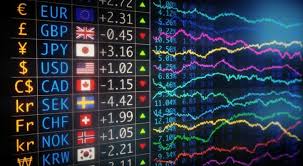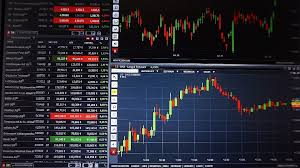
What is Forex Trading?
Forex trading, also known as foreign exchange trading or currency trading, is the process of buying and selling currencies in the global marketplace. It is one of the largest financial markets in the world, with a daily trading volume exceeding $6 trillion. This market operates 24 hours a day, five days a week, allowing traders to capitalize on price movements across different currencies. If you are looking to dive deeper into this exciting world of trading, you can find valuable resources at what is forex trading https://acev.io/.
How Forex Trading Works
The Forex market is a decentralized market where currencies are traded in pairs. Each currency pair represents the value of one currency relative to another. For example, in the currency pair EUR/USD, the Euro (EUR) is the base currency, and the US dollar (USD) is the quote currency. If the EUR/USD pair is trading at 1.20, it means that 1 Euro is equivalent to 1.20 US Dollars.
Traders speculate on the price movements of currency pairs, aiming to benefit from fluctuations. If a trader believes that the Euro will strengthen against the Dollar, they might buy the EUR/USD pair. Conversely, if they think the Euro will weaken, they would sell the pair. The key to success in Forex trading lies in understanding market trends, analyzing price charts, and using various trading strategies.
Key Terminology in Forex Trading
To navigate the Forex market effectively, it is essential to understand the terminology associated with it. Here are some key terms:
- Currency Pair: A quotation that indicates how much of the quote currency is needed to purchase one unit of the base currency.
- Leverage: A feature that allows traders to control a larger position size with a smaller amount of capital. It amplifies potential gains but also increases potential losses.
- Lot: A standardized unit of measurement in Forex trading. A standard lot is 100,000 units of the base currency, while a mini lot represents 10,000 units.
- Pip: The smallest price move in a currency pair, usually the fourth decimal place (0.0001), indicating the change in value.
- Spread: The difference between the bid price (selling price) and the ask price (buying price) in a currency pair.
Types of Forex Traders

Forex traders come in various forms, each employing different strategies depending on their trading styles. Here are the main types of Forex traders:
- Scalpers: Traders who aim to profit from small price changes by executing numerous trades within a short time frame.
- Day Traders: Traders who open and close positions within the same trading day, avoiding overnight exposure to market risks.
- Swing Traders: Traders who hold positions for several days or weeks to take advantage of expected price changes.
- Position Traders: Long-term traders who base their strategies on fundamental analysis and hold positions for months or even years.
Forex Trading Strategies
Developing a successful trading strategy is crucial for maximizing profitability in Forex trading. Below are some popular strategies:
1. Trend Following
This strategy involves identifying the direction of the market trend (upwards, downwards, or sideways) and trading in the same direction. Traders use technical indicators such as Moving Averages and trendlines to analyze market behavior.
2. Breakout Trading
Breakout trading focuses on identifying key levels of support and resistance. When the price breaks through these levels, traders enter a position, anticipating a significant price movement in the breakout direction.
3. Range Trading

This strategy is used in sideways markets, where the price oscillates between established support and resistance levels. Traders buy at the support level and sell at the resistance level, profiting from price fluctuations within the range.
Risks Involved in Forex Trading
While Forex trading presents ample opportunities for profit, it is essential to recognize the risks involved. The high volatility of currency pairs can lead to substantial losses if not managed properly. Traders should implement risk management strategies, such as setting stop-loss orders, to limit potential losses.
Additionally, leverage can magnify losses, making it crucial for traders to understand the impact of using borrowed funds in their trading activities.
Getting Started with Forex Trading
To begin your Forex trading journey, follow these steps:
- Educate Yourself: Take the time to learn about the Forex market, trading strategies, and risk management techniques. Utilize online courses, webinars, and trading forums to expand your knowledge.
- Choose a Reliable Broker: Select a Forex broker that offers a user-friendly trading platform, competitive spreads, and comprehensive customer support.
- Open a Demo Account: Practice trading with a demo account to gain hands-on experience without risking real money. This will help you refine your trading strategies and get comfortable with the trading process.
- Start Trading with Real Funds: Once you feel confident, deposit funds into a live trading account and begin trading with real capital. Start small and gradually increase your position sizes as you gain experience.
Conclusion
Forex trading can be an exhilarating and rewarding venture when approached with proper knowledge and discipline. By understanding how the market operates, familiarizing yourself with key terminology, and developing a robust trading strategy, you can navigate the complexities of Forex trading successfully. Always remember to stay informed about market trends and keep emotions in check while trading. With dedication and practice, you can work towards becoming a successful Forex trader.